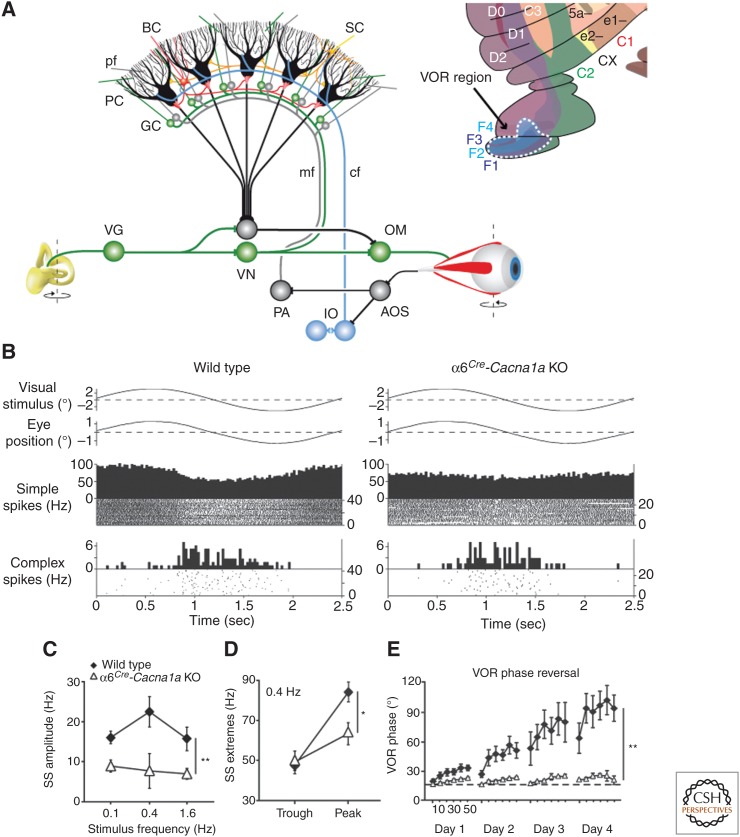Figure 4.
Circuit of the vestibulo-ocular reflex and prominent role of modulation amplitude. (A) The vestibulo-ocular reflex (VOR) is mediated by the three-neuron arc of Lorente de No in the brainstem. When the head rotates, the vestibular signals from the semicircular canals are transferred by the vestibular ganglion cells (VG) to the second-order vestibular neurons in the vestibular nuclei (VN), which in turn innervate the oculomotor neurons (OMs) driving the eyes to the opposite side. The vestibulocerebellum, which is superimposed on this three-neuron arc, is required to compensate for the delays introduced during input–output processing. To minimize retinal slip during head movements, the accessory optic system (AOS) relays slip signals through the climbing fiber (cf) system to the zebrin-positive Purkinje cells (PC) in floccular zones F1–F4 in the vestibulocerebellar cortex (see inset), where the presence and absence of the climbing fiber activity is integrated with vestibular, optokinetic, and eye movement signals mediated by the mossy fiber (mf)–granule cell (GC)–parallel fiber (pf) pathway. The Purkinje cells in turn can inject well-calibrated, accelerating signals into the vestibular brainstem so as to precisely compensate for the delays. (B) α6Cre-Cacna1a knockout (KO) mice, in which transmission in the vast majority, but not all, of parallel fibers is blocked, show a normal amplitude of their optokinetic reflex when a visual stimulus is given, despite a reduced modulation of their simple spike activity. (C,D) The modulation of the simple spike, but not the complex spike, activity in α6Cre-Cacna1a KO is reduced over a wide range of frequencies, and these deficiencies are caused by a reduction in the peak of the modulation. (E) VOR phase reversal is a form of VOR adaptation, during which the phase of the VOR is reversed by providing an in-phase optokinetic stimulus that is greater in amplitude than the vestibular stimulus; α6Cre-Cacna1a KO mice have severe problems reversing the phase of their eye movements indicating that mammals have their abundance of GCs and pfs to control motor learning rather than basic motor performance. PA, pontine area; BC, basket cell; SC, stellate cell. (From Galliano et al. 2013a; modified, with permission, from the authors.)

